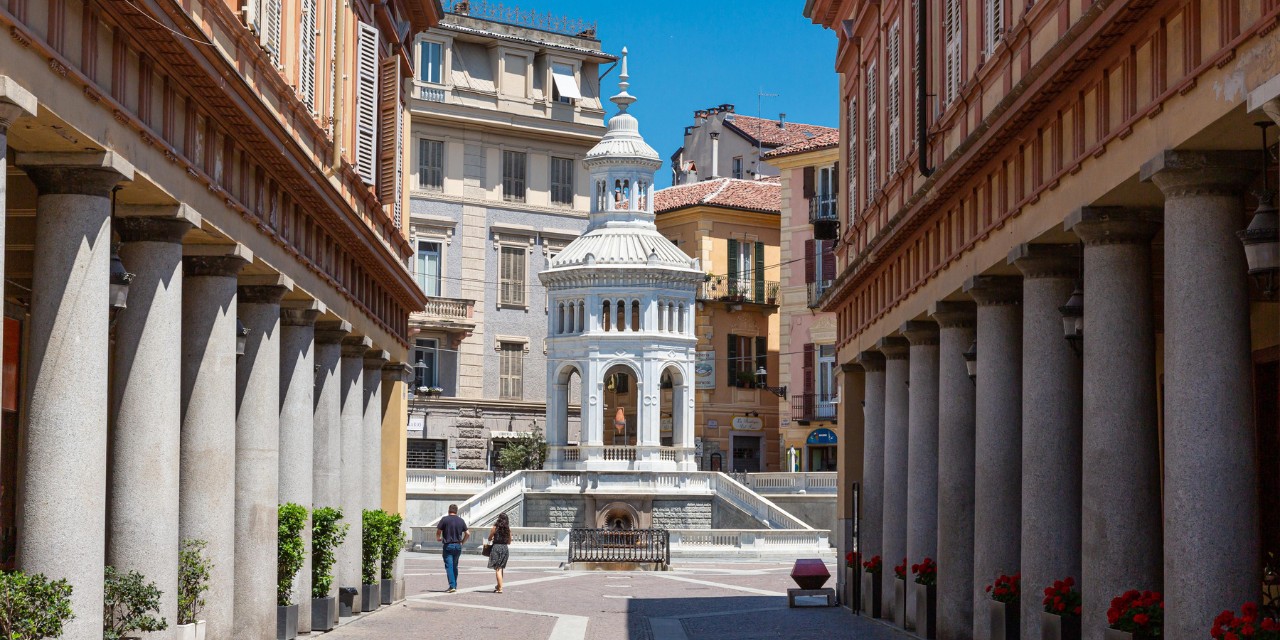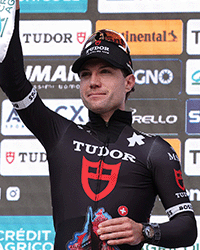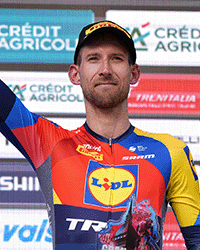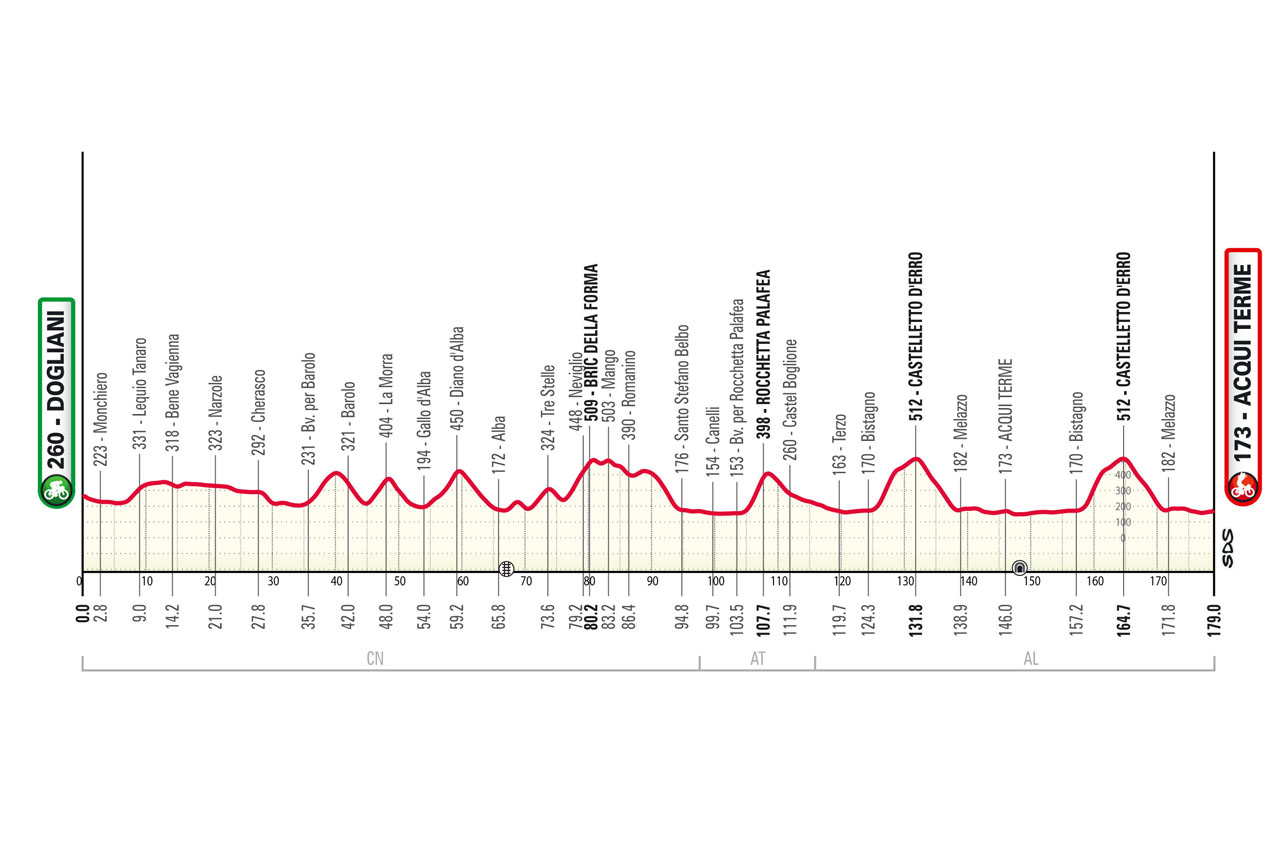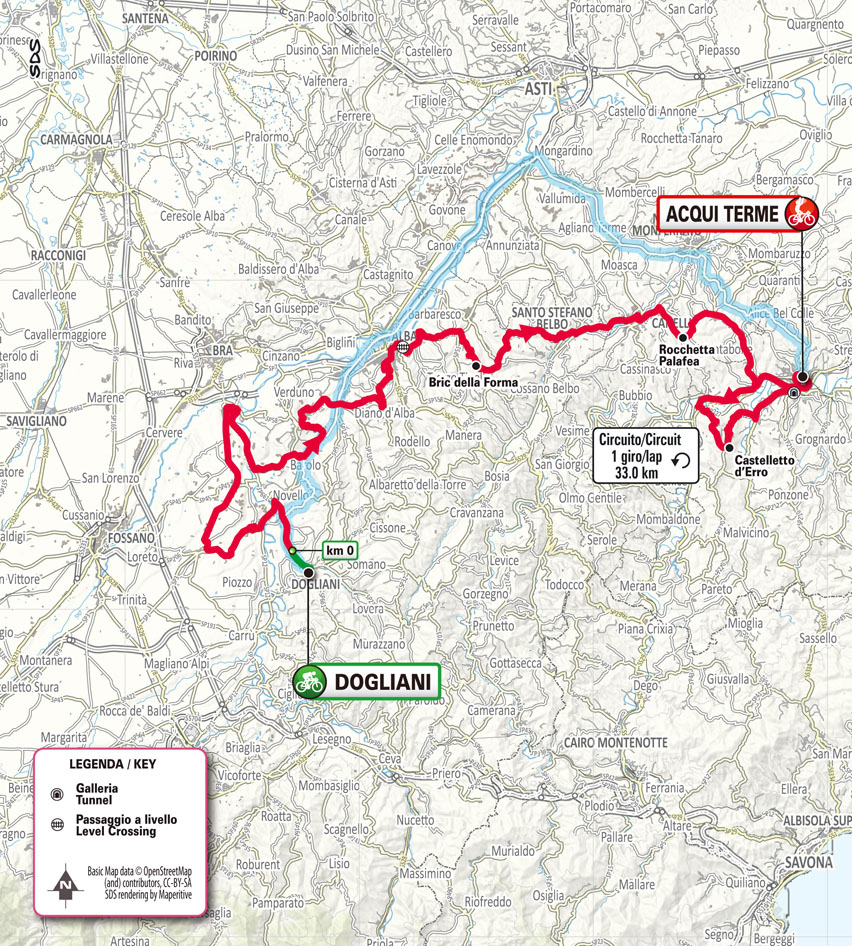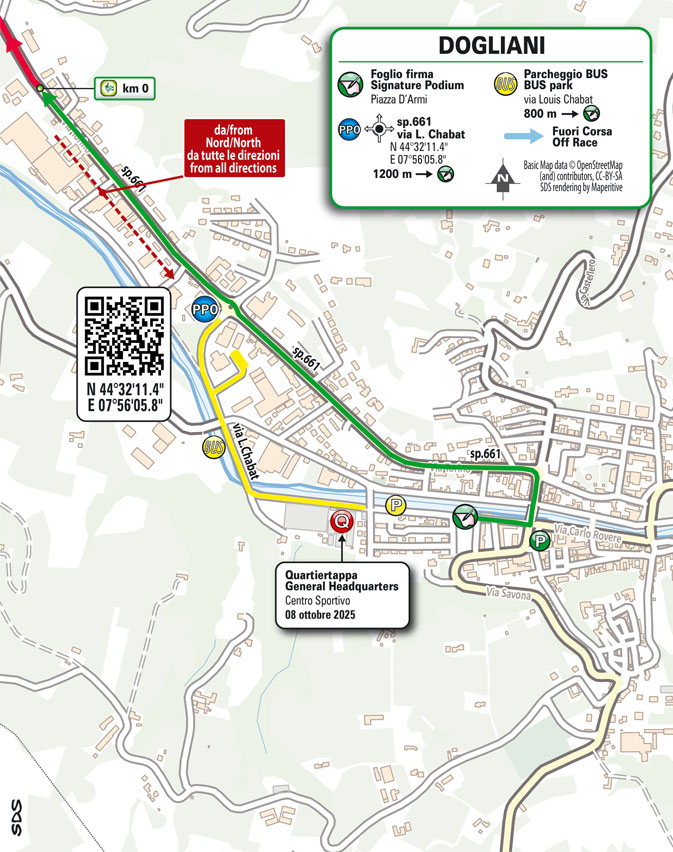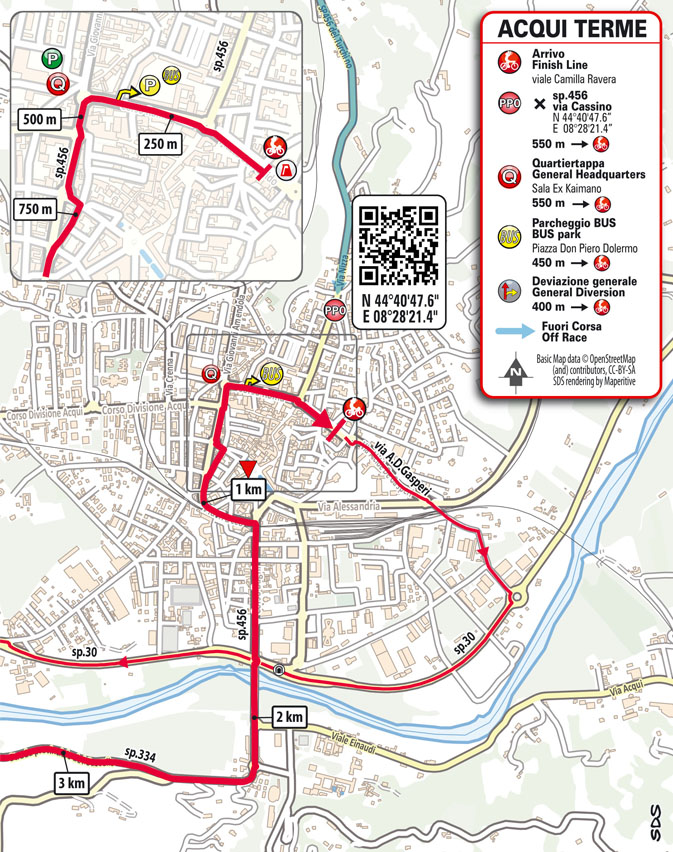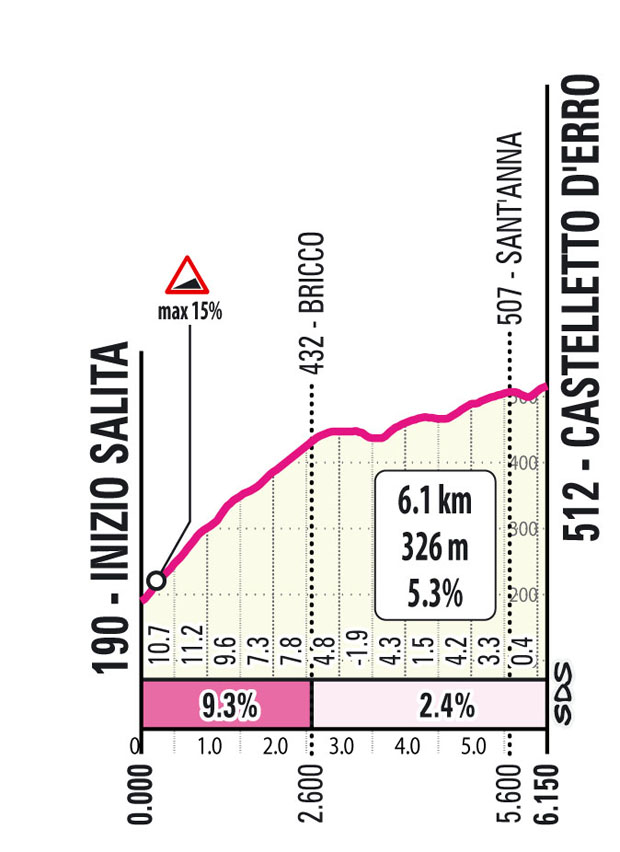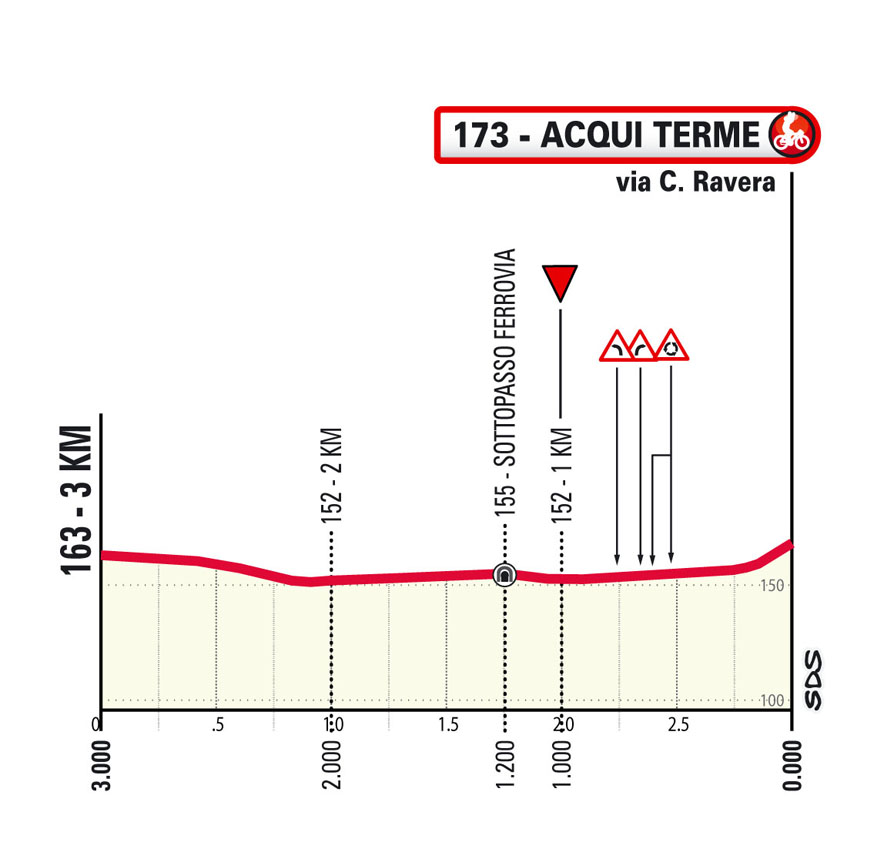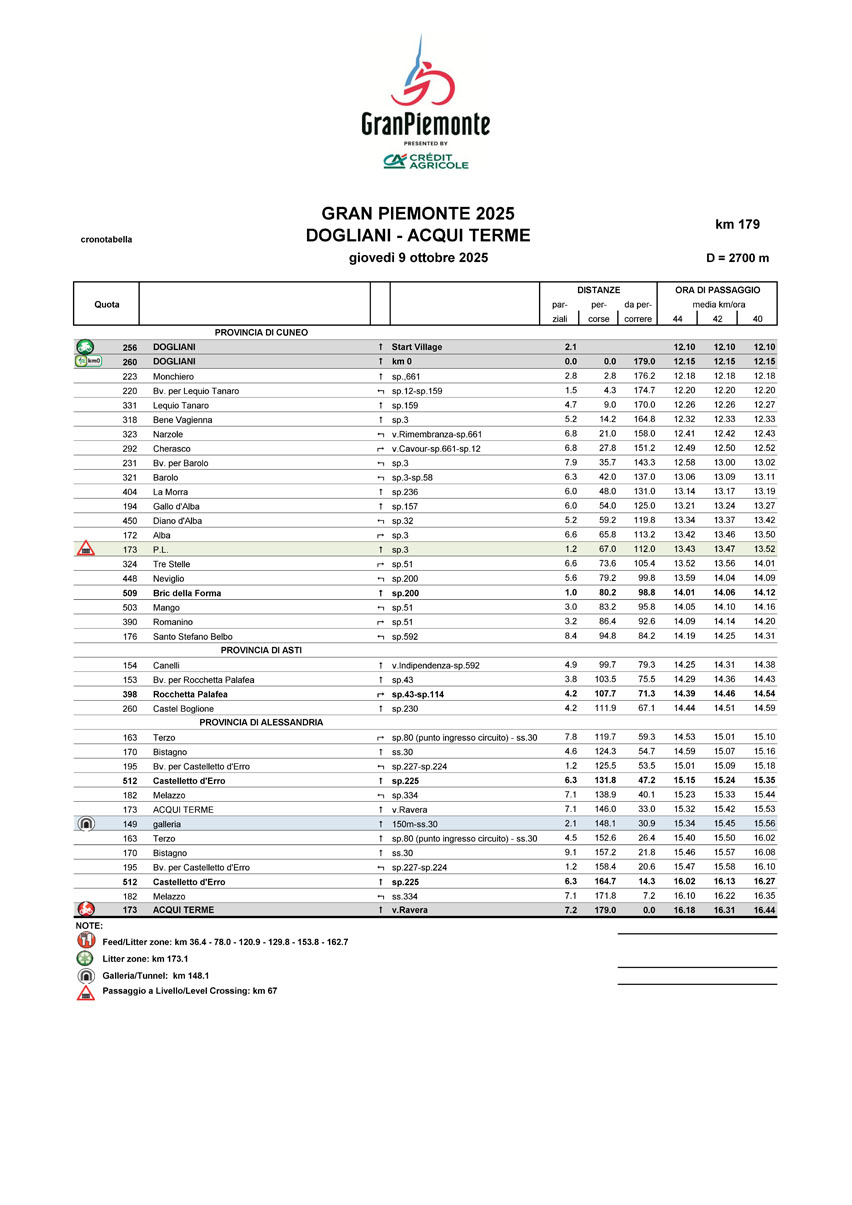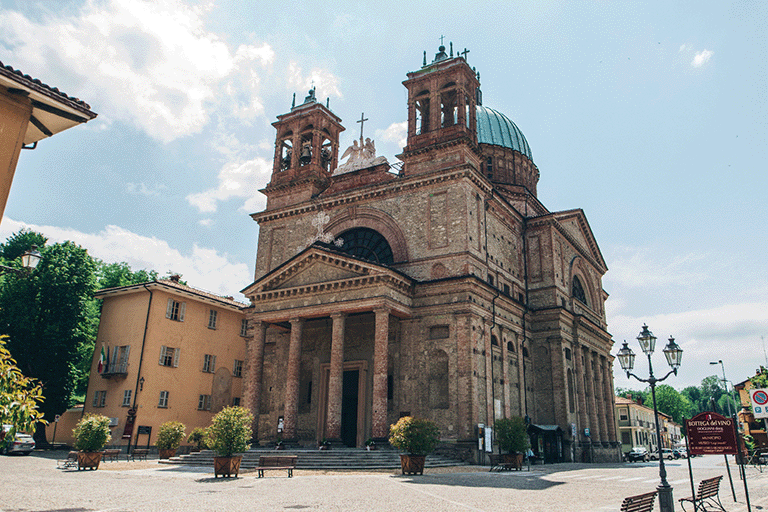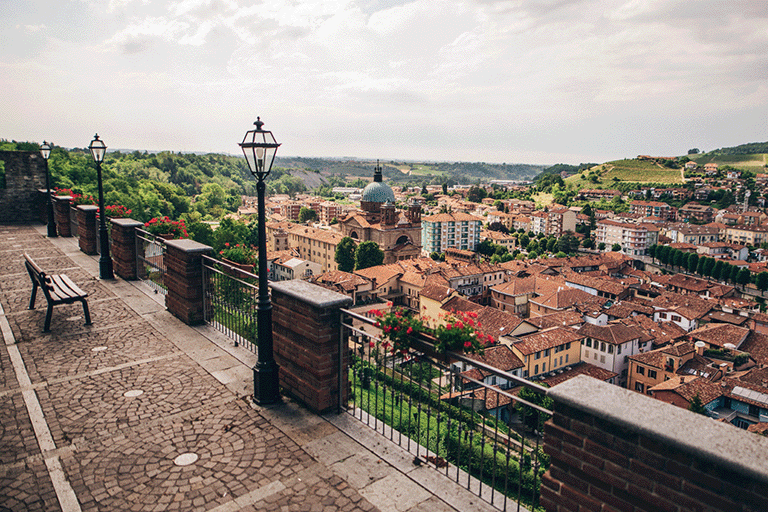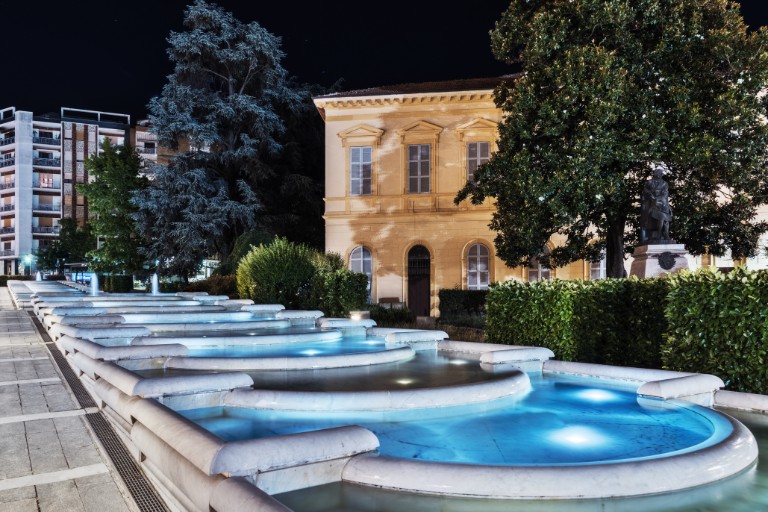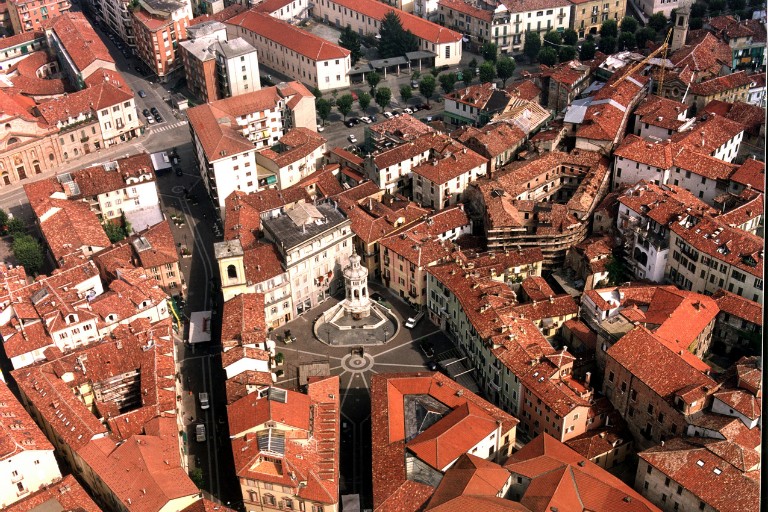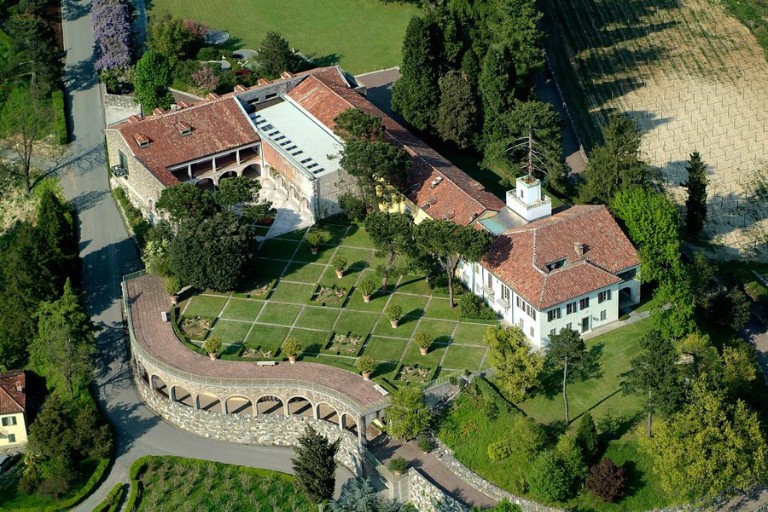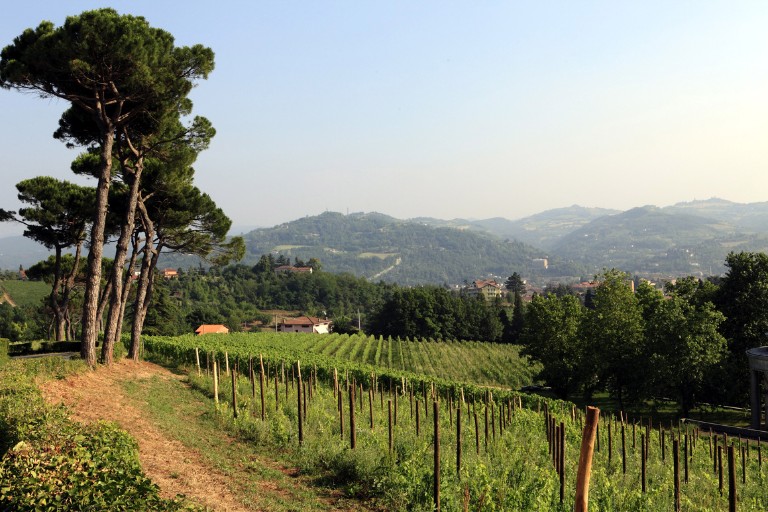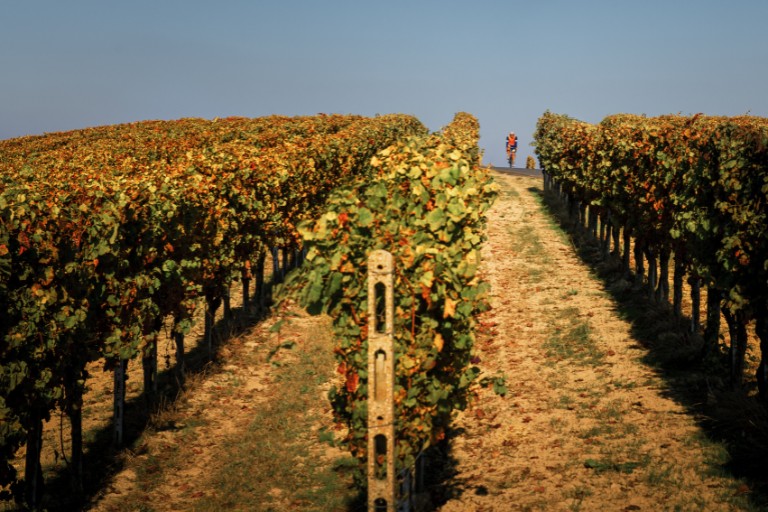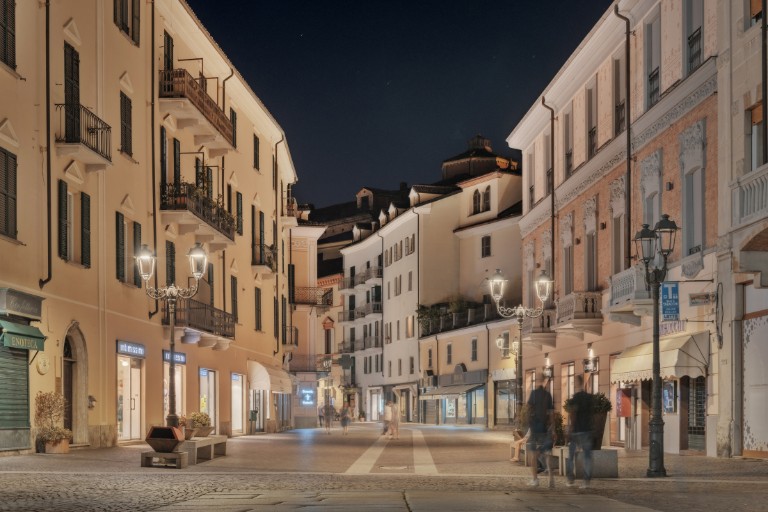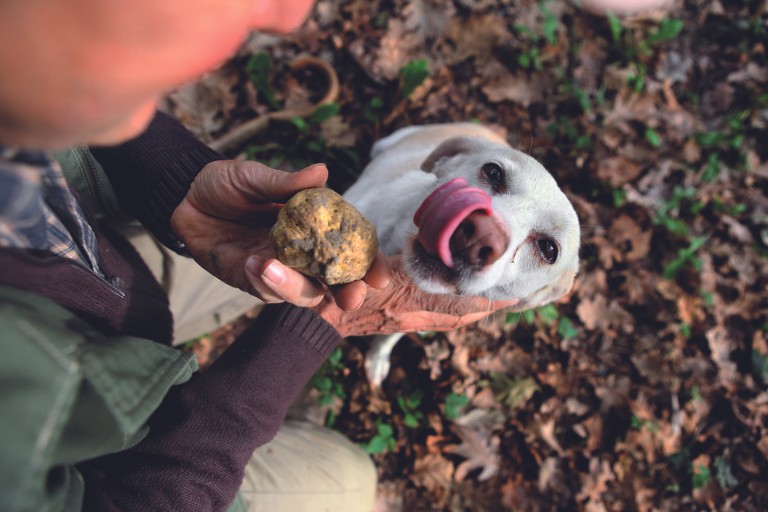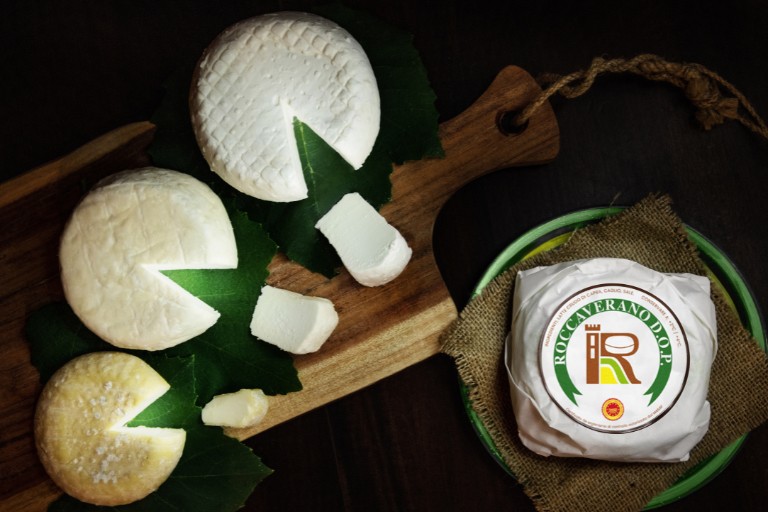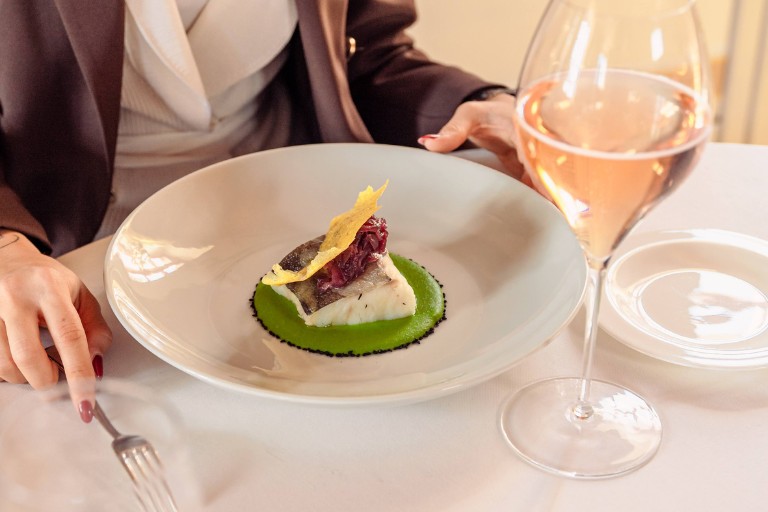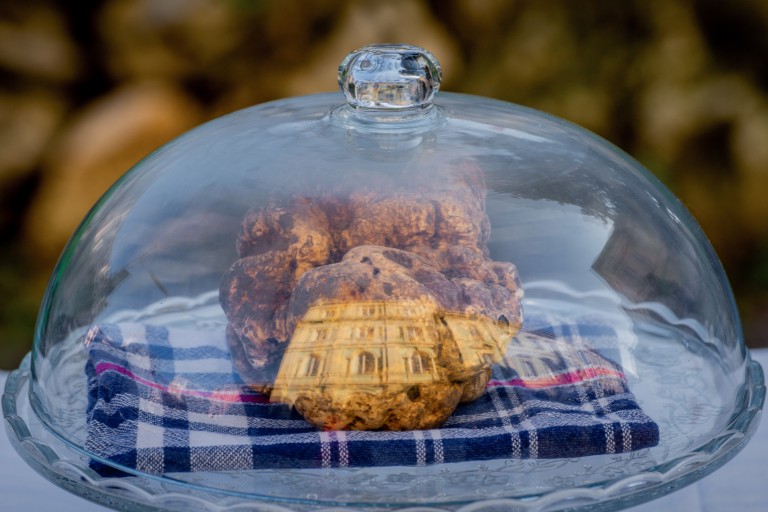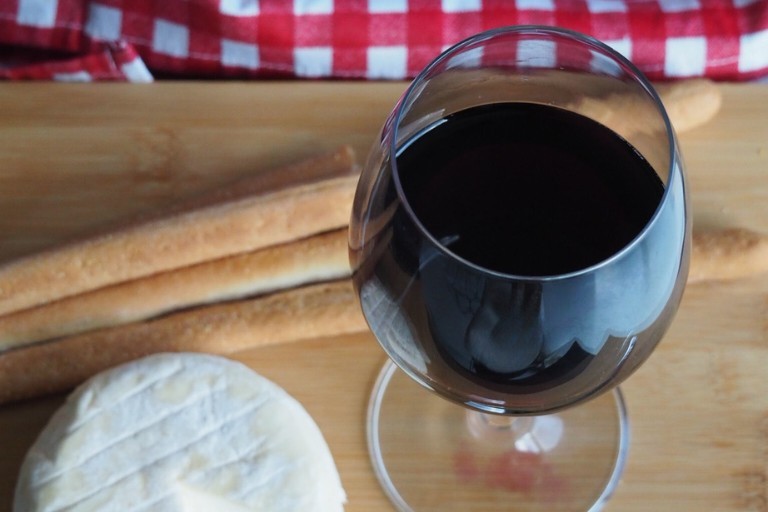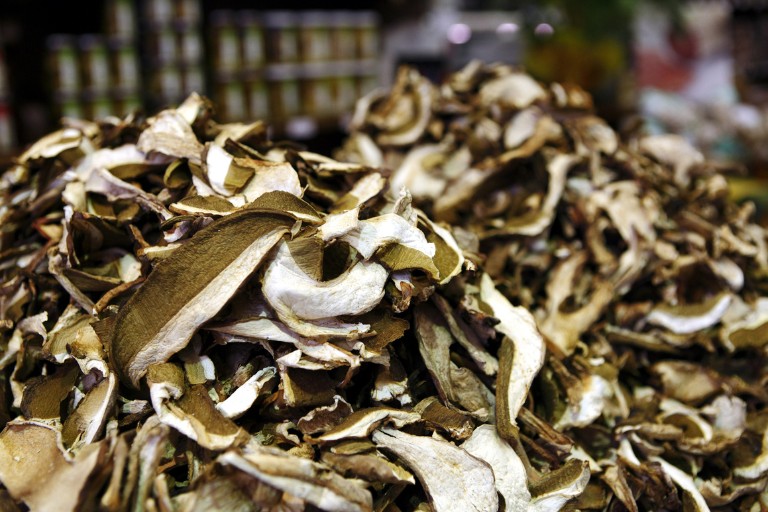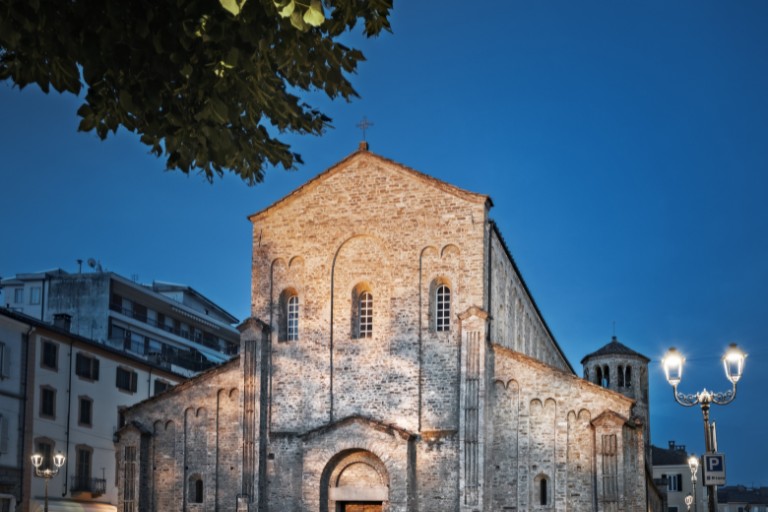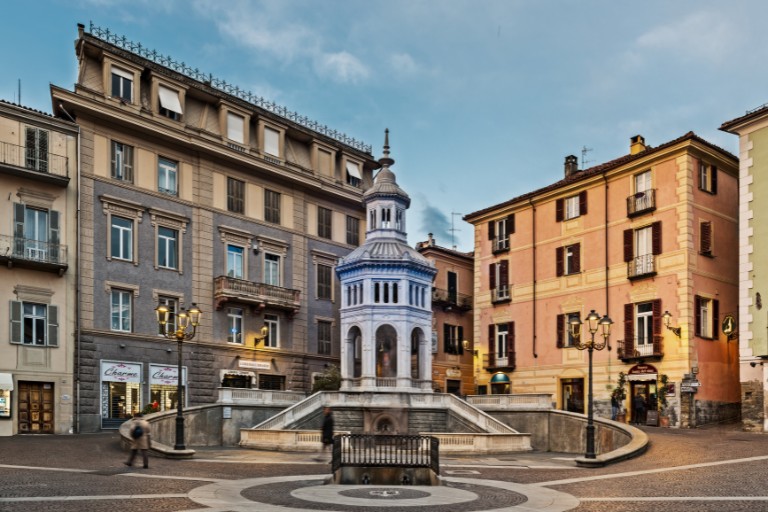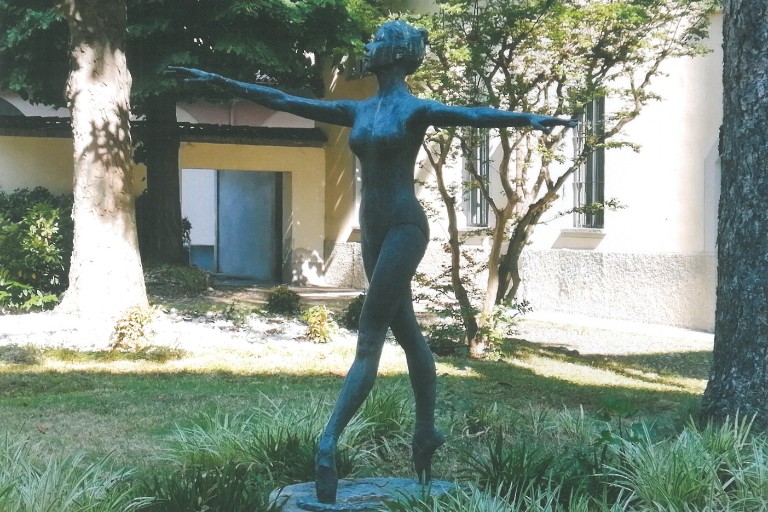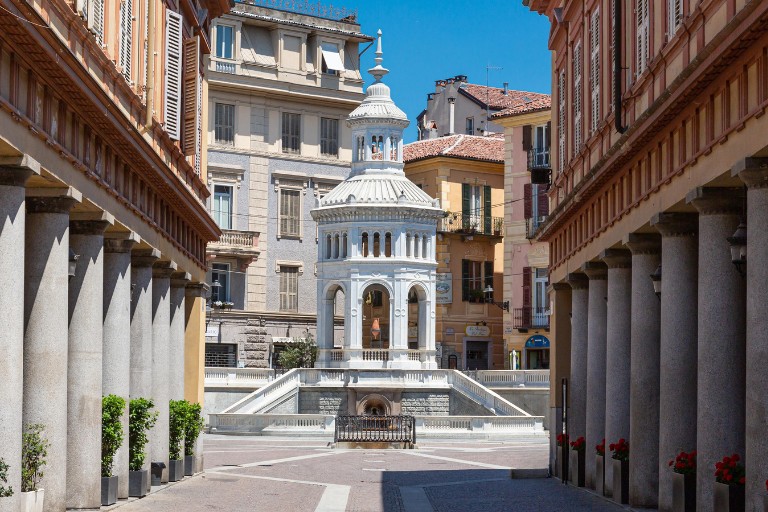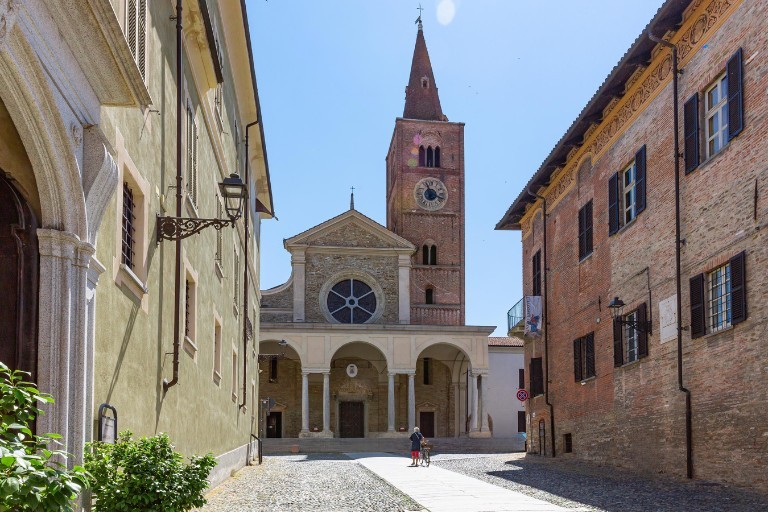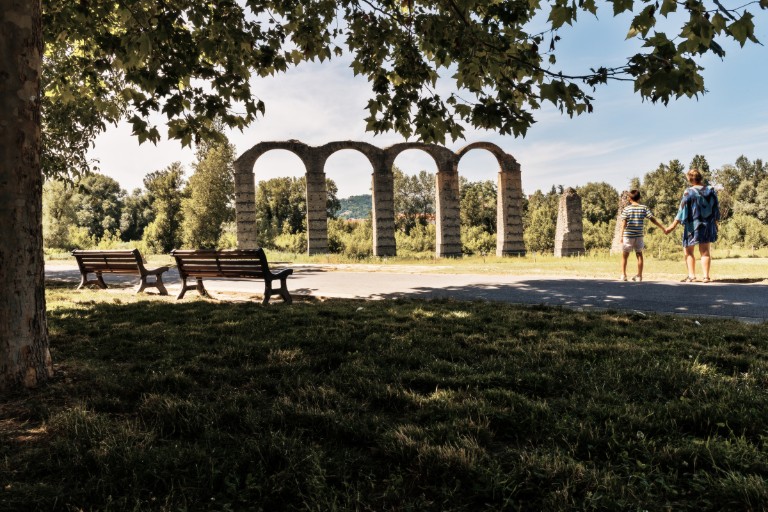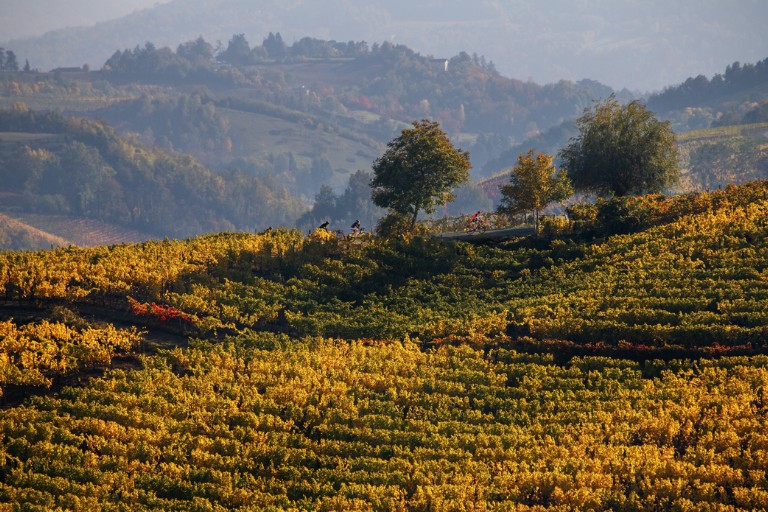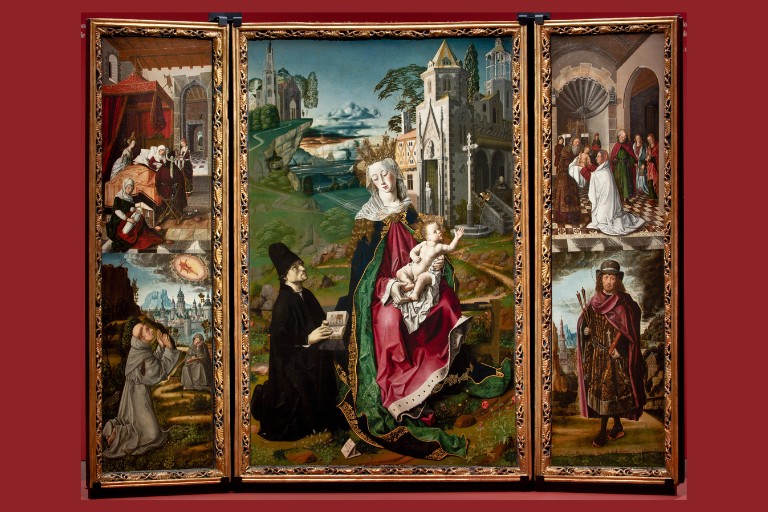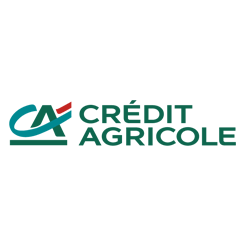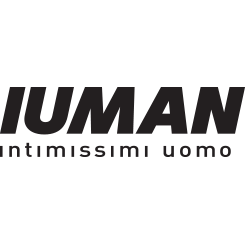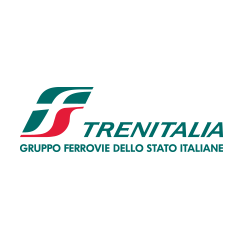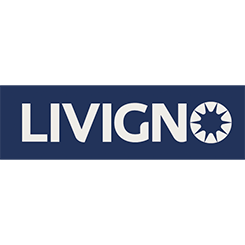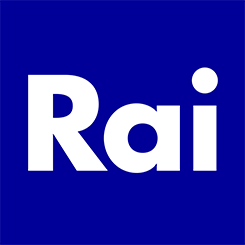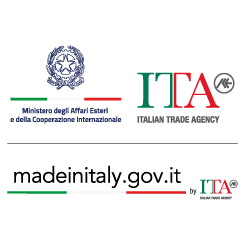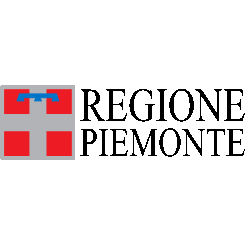learn more
technical info
profile
map
technical info
A demanding route featuring around ten climbs of varying length, with the Bric della Forma and Rocchetta Palafea standing out before the final circuit, and the Castelletto d’Erro ascent to be tackled twice. Its opening ramps hit 11% with pitches up to 15%. From Dogliani the race winds through a relentless sequence of climbs and descents via Cherasco, Barolo, La Morra, and Diano d’Alba, before facing the Bric della Forma leading to Santo Stefano Belbo. Then comes the Rocchetta Palafea climb, whose descent drops into the 33 km finishing circuit, to be completed once after passing the finish line. The circuit itself includes a flat section before the Castelletto d’Erro climb, followed by a fast, technical descent back into town, setting up the decisive run-in.
Final kilometers
The last kilometers begin at the entrance to Acqui Terme. After passing through the Bagni area, the route crosses the Bormida River before heading into the town center along a long, straight avenue with a gentle uphill drag. A short underpass and a left-hand bend lead into the final kilometer, which features a few roundabouts. The finishing straight measures 450 m, 7 m wide, on asphalt, with a steady 4% uphill gradient.
start / finish
climb detail
final kilometres
itinerary timetable
tourist info
Host city:
Dogliani
Overview
Dogliani is a land of fine wines, excellent food, art and ancient fairs, nestled in the year-round stunning landscape of the Langhe – a UNESCO World Heritage Site. Visitors can walk or ride (by bicycle or e-bike) on scenic routes through the hills and vineyards, explore the history of Dogliani Borgo, and marvel at the architectural splendour of the fortified medieval hilltop village, Dogliani Castello. Main highlights include the monumental entry to the cemetery, a neo-Gothic work by G.B. Schellino. The graveyard is the final resting place of President Luigi Einaudi, a citizen by adoption.
Today, smart tourist signage and the immersive ‘Diorama’ experience tell the story of the town in an accessible, engaging and interactive way. Tradition and innovation also merge in the rich schedule of artistic, cultural and food&wine events to offer unique and unforgettable experiences.
Click here to find out more
Acqui Terme
Overview
Acqui Terme is a charming spa town located in southern Piedmont, not far from the major cities of Genoa, Milan, and Turin. Nestled on the left bank of the Bormida River, at 154 meters above sea level, the town is surrounded by the vineyards and landscapes of Monferrato, recognized as a UNESCO World Heritage Site in 2014.
Today the town ranks among the best-known spa destinations in Piedmont and one of the most important in Italy for the healing qualities of its waters. Already renowned in Roman times as a flourishing center famous for its steaming hot springs, these thermal waters – rich in therapeutic properties – still gush in Piazza Bollente, at the heart of the historic center and beyond the river.
Food and wine represent the other great strength of the area, playing a vital role both economically and for tourism. The imposing remains of the Roman aqueduct that rise along the Bormida stand as a testament to how water has always been the lifeblood of this city, which offers visitors an enviable blend of wellness, art, culture, history, gastronomic excellence, charm, and the warmth of Italian hospitality, making it a truly unique destination.
Food
Acqui Terme offers an excellent choice of typical restaurants, elegant ones, trattorias, inns and agriturismi (farmhouses usually serving guests food that was prepared from raw materials produced on the farm or from other local merchants).
This is a land to savour through its food and wine treasures. The gastronomy, though characterised by simplicity, is very rich, consisting of dishes based on local seasonal ingredients. Most dishes have poor origins derived from the modest economic conditions of the area during past centuries, and despite having been enriched over time, they have never lost their primary ingredient: authenticity.
Typical of the local cuisine are a rich selection of starters, including the “filetto baciato” salami, an absolute delight, cacciatorini, lard, peppers with bagna cauda and a variety of savoury pies. Among the first courses, tajarin with mushrooms or game sauces, agnolotti al plin, polenta, cisrò – farinata – deserve a special mention, and among the second courses, the local meats, mixed boiled meat, rabbit, braised meat, tripe, but also stockfish, finanziera, Piedmontese fritto misto and bagna cauda, the convivial dish par excellence, all represent unforgettable dining experiences. Hence the birth of a renowned speciality such as Stoccafisso all’acquese, an iconic recipe handed down from generation to generation and present on several menus in Acqui’s restaurants.
Other local specialities include amaretti biscuits, baci di dama (lady’s kisses), brut e bon, Acquesi al Rhum and Canelin’s award-winning turrón, recognised together with the local artisanal ice cream as one of Italy’s best products!
The highly appreciated truffle, one of the top products of the region, grows underground throughout the local area, in harmony with oak, willow, linden and poplar trees.
Porcini mushrooms, delicious and abundant in our valleys, are much sought after by gourmets in the autumn months.
Roccaverano DOP – (literally “Protected Designation of Origin”) – A product that symbolises the hard work behind mountain sheep/goat farming. This goat’s cheese – a blend of the fragrances, flowers and herbs of the area, produced fresh or matured – appears to this day to be the only one capable of equalling if not surpassing the legendary French cheeses.
Filetto baciato – a renowned product of Aquitaine gastronomy, the filetto baciato is a unique kind of cured meat, invented by the Malò (Ponzone) family at the beginning of the last century and obtained by stuffing salami paste around the pork fillet.
Wines and other drinks
The Alto Monferrato territory and the entire Acqui area is a wonderful land surrounded by picturesque vineyards producing excellent wines appreciated all over the world. Visitors and encouraged to explore our wineries and the Regional Wine Cellar, where you can taste the best wines, visit the characteristic and historic cellars, discover how wine is made, learn about the perfect gastronomic combination of wine and food, and stroll through the vineyards!
The vineyards are an unmistakable presence in the Acquese territory. For generations, the skilful cultivation of grapes has produced excellent wines, among which Acqui DOCG, Brachetto d’Acqui DOCG and Dolcetto d’Acqui DOC stand out as typical wines. Additionally, wines are produced from the cultivation of prized grapes such as Barbera, Freisa, Dolcetto, Cortese, Chardonnay, as well as the renowned aromatic essences of Brachetto and Moscato to be enjoyed in sweet, sparkling, rosé and passito versions.
Points of Interest
- The Bollente kiosk and thermal spring: the town’s undisputed symbolic monument and a mandatory stop for visitors. A true gift of nature, thermal water gushes out at an incredible rate of 560 litres per minute at a temperature of 74.5 C. The intervention of the municipal administration led by Giuseppe Saracco radically transformed the ancient area around the spring of the same name by demolishing the old Jewish Ghetto (1870-1880). Engineer Giovanni Ceruti was responsible for the eclectic-style shrine-temple (1879), which highlights the importance of the place. The civic tower dates back to 1763 and was built to a design by the Alessandria-based architect Giuseppe Domenico Trolli over the arch of the ancient Porta della Bollente.
- The Cathedral of Santa Maria Assunta: for over ten centuries it has been the landmark of all urban and diocesan life. This cathedral stands on the square overlooked by the 15th-century Bishop’s Palace and the Diocesan Seminary, close to the massive fortress of the Castle.
- Paleologi Castle, Municipal Archaeological Museum: the castle of Acqui Terme, known as “dei Paleologi”, dates back in its original layout to the 11th century. It was, at first, the residence of the bishop-counts of Acqui, who lived there until violent internal clashes between the town’s noble families put an end to their rule. It later became the stronghold of the mediaeval village of Acqui and the seat of the town’s governors before passing to the Marquises Paleologi del Monferrato in 1260. Starting in 1708, the complex came under the direct administration of the House of Savoy, who progressively deprived it of its original function as a fortress, assigning it, from the early 19th century, to the function of prison that it maintained until recent years. Today it is home to the Municipal Archaeological Museum, which houses interesting remains from prehistoric and protohistoric times, the Roman era and the late antique and medieval periods.
- Il Giardino Botanico “Birdgarden” is located within the castle walls and is a natural oasis in the heart of the city.
- Borgo Pisterna: this is the ancient heart of Acqui Terme, where the streets are lined with houses and noble palaces of great artistic value, dating from the 15th to the 18th century, that have recently been refurbished and revalued. This area is also the setting for shows held throughout the summer at the ‘G.Verdi Open-air Theatre.
- Piazza Italia: it is the town’s central square, criss-crossed with the scenic stepped fountains of the “Water Lilies” that descend from Corso Viganò towards the centre of the square.
- The Rotten Water Temple: located in the bathing area, beyond the river. It is a thermal water spring with a much lower flow rate than the other springs, gushing out at 19°C.
The Roman aqueduct: the arches of the Roman aqueduct constitute one of the historical boasts of the city of Acqui. Indeed, this is the best preserved of all monuments of its kind still existing in the territory of present-day Piedmont and one of the most significant examples of Roman aqueducts in the whole of northern Italy. The construction of this system can be traced back to the early imperial age, perhaps to the Augustan period (early 1st century a.C.).
- The Roman Pool: remains from a vast thermal complex dating back to the Imperial age, found in 1913. It is a vast hot-water pool (calidarium) originally entirely lined with marble slabs and flanked by several rooms heated through a hypocaust system. The water for the facility was brought through a canal directly from the source of the Bollente. The thermal building, together with the nearby amphitheatre discovered in the 1960s, occupied a peripheral area of the ancient Roman Aquae Statiellae, outside the built-up area but convenient to reach via the Via Aemilia Scauri.
Videos GranPiemonte 2025

GranPiemonte presented by Crédit Agricole 2025 | Gran Torito
10 Oct 2025
GranPiemonte presented by Crédit Agricole 2025 | Highlights 🇬🇧
9 Oct 2025
GranPiemonte presented by Crédit Agricole 2025 | Last KM 🇬🇧
9 Oct 2025

